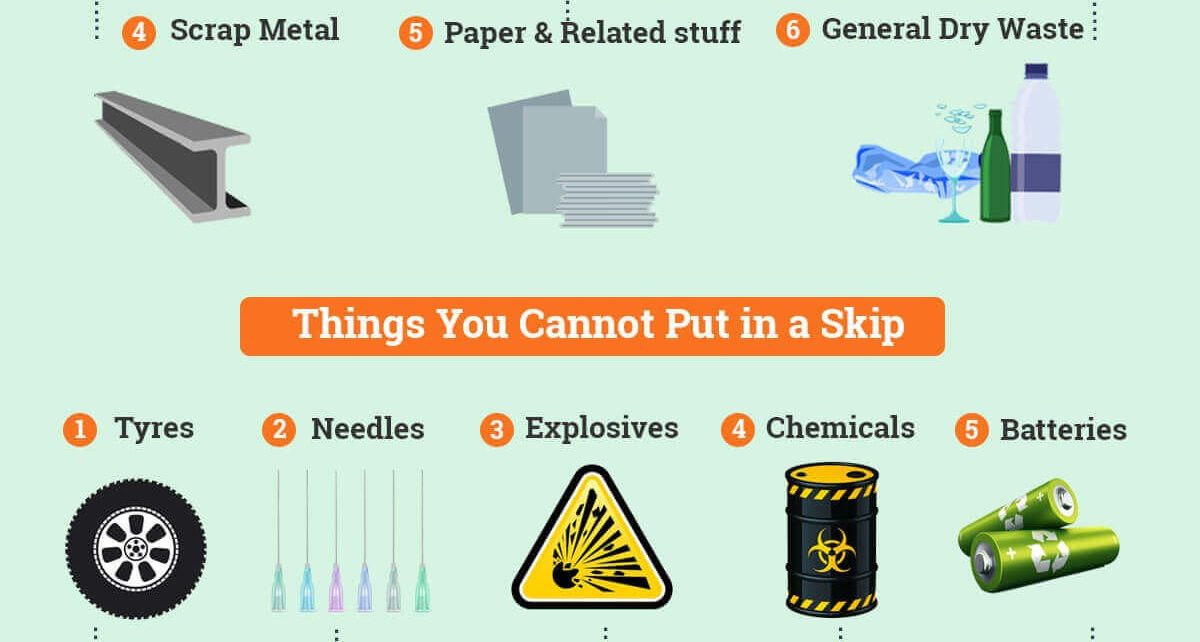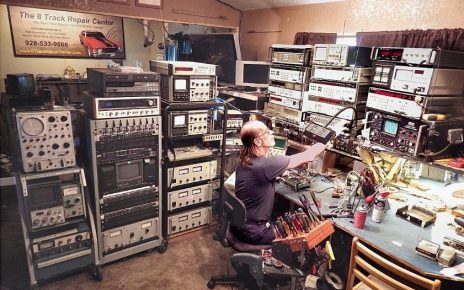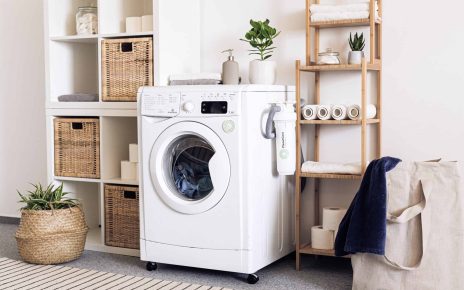When you ask yourself, “what can you put in a skip,” the answer is straightforward: various types of waste and debris. Skips serve as an efficient solution for disposing of everything from old furniture and garden waste to construction materials.
However, not everything belongs in a skip. Knowing the dos and don’ts can save you time and hassle, ensuring you comply with local regulations while maximizing the space you have.
In this article, we’ll guide you through the different items you can safely toss into a skip, helping you declutter your space effectively.
What Can You Put in a Skip?
When it comes to home renovations, garden clearances, or major decluttering projects, hiring a skip can be a lifesaver. A skip gives you a convenient way to dispose of large quantities of waste without the hassle of making multiple trips to the local dump. However, not everything can go into a skip. Knowing what you can put in a skip is crucial for ensuring that your waste disposal process is smooth and compliant with local regulations. In this guide, we will explore various materials you can dispose of in a skip, provide tips for proper skip usage, and highlight what to avoid.
Types of Waste Allowed in a Skip
Understanding what types of waste you can place in a skip is essential. Generally, skips can accommodate a variety of materials. Here’s a detailed breakdown:
General Waste
You can dispose of most everyday waste materials in a skip. This category includes:
- Cardboard and paper: Old boxes, newspapers, and magazines.
- Plastic: Non-recyclable plastics like containers and packaging.
- Wood: Untreated wood from furniture or construction.
- Furniture: Old sofas, chairs, tables, and mattresses (check with your skip provider on mattress disposal).
- Household items: Toys, appliances, and other miscellaneous items.
Construction and Renovation Waste
If you’re undertaking a DIY project, a skip is perfect for handling construction debris. Common materials include:
- Bricks and blocks: Old bricks, block paving, or concrete.
- Tiles: Ceramic tiles, floor tiles, or bathroom tiles.
- Plasterboard: Waste from drywall installation or demolition.
- Metal: Scrap metal from construction or old appliances.
- Glass: Broken window panes and mirrors (ensure they are wrapped for safety).
Garden Waste
If you’re clearing out your garden, a skip can handle a variety of organic waste:
- Soil and earth: Loose soil and leftover dirt.
- Green waste: Grass cuttings, leaves, branches, and plants.
- Wood: Branches and tree trimmings are typically acceptable.
Commercial Waste
Businesses that require waste disposal can also benefit from skips. Here’s a list of commercial waste that is typically allowed:
- Office furniture: Desks, chairs, and partitions.
- Packaging materials: Boxes and plastic wrap from shipments.
- Retail waste: Unsold or damaged goods (check with the provider).
Special Considerations for Hazardous Waste
While many materials can go in a skip, some types of waste require special handling. Here’s what you need to know:
Hazardous Materials
Certain materials are classified as hazardous and should never go in a skip. This includes:
- Asbestos: Requires specialized disposal methods.
- Batteries: Car batteries and household batteries contain toxic substances.
- Paints and solvents: Liquid paints and chemicals can be dangerous.
- Electronic waste: Includes old computers, TVs, and other electronics.
- Fluorescent tubes: They contain hazardous materials and require specific disposal.
Check Local Regulations
Regulations can vary by location. Always check with your local council or skip hire company to understand what is considered hazardous in your area. They may offer alternative disposal services for hazardous materials.
How to Load a Skip Properly
Loading a skip efficiently is essential to maximize space and ensure safe transport. Here are some tips to help you:
- **Break Down Large Items**: Disassemble furniture and break down boxes to make room.
- **Distribute Weight Evenly**: Place heavier materials at the bottom and lighter materials on top.
- **Use a Tarp or Covers**: If your skip is open-topped, covering it will help keep debris in and prevent accidents.
- **Do Not Overfill**: Avoid exceeding the height of the skip. Overfilling can be dangerous during transportation.
What to Avoid Putting in a Skip
Now that you know what you can place in a skip, let’s turn to what you should avoid:
Items You Cannot Place in a Skip
Knowing what to keep out of a skip is as important as knowing what to put in. Avoid these items:
- **Hazardous Waste**: As mentioned earlier, items like asbestos, batteries, or chemicals.
- **Fridges and Freezers**: These contain refrigerants that require special disposal.
- **Medical Waste**: This includes anything used for medical purposes, such as needles.
- **Tyres**: Many skip companies do not allow tyres due to recycling regulations.
- **Flammable Materials**: Items like gas cylinders or oil should never go in a skip.
Environmental Considerations
Keeping environmental impact in mind is crucial when disposing of waste. Proper recycling is vital for sustainability. Many skip hire companies focus on recycling as much waste as possible. Here are some ideas for responsible disposal:
- **Contact Local Recycling Centres**: Some materials can be dropped off for recycling.
- **Reuse Items**: Consider donating usable items to charities or selling them online.
- **Separate Recyclables**: If you have recyclables like glass, plastic, or paper, set them aside for proper recycling.
Choosing the Right Size Skip
When hiring a skip, one of the most crucial decisions is selecting the right size. Skips come in various sizes, typically measured in cubic yards. Here’s a quick guide:
Skip Size Guide
- **Mini Skip (2-3 cubic yards)**: Ideal for small projects like garden waste or a single room clear-out.
- **Midi Skip (4-5 cubic yards)**: Suitable for larger home renovations or multiple rooms.
- **Builder’s Skip (6-8 cubic yards)**: Perfect for construction projects and larger amounts of debris.
- **Large Skip (10-12 cubic yards)**: Great for major home renovations, commercial projects, or large-scale clean-outs.
The Cost of Skip Hire
Understanding the cost of skip hire can help you budget appropriately. Factors that can influence the price include:
Factors Affecting Skip Hire Costs
- **Size of the Skip**: Larger skips usually cost more to hire.
- **Duration of Hire**: Longer rental periods can increase the price.
- **Location**: Prices may vary based on where you live.
- **Type of Waste**: Certain types of waste can incur extra fees, especially hazardous materials.
Finding a Reputable Skip Hire Service
To ensure a smooth skip hire experience, it’s essential to choose a reputable service. Here are some tips on finding a trustworthy skip provider:
- **Check Reviews**: Look for customer feedback online to gauge their reliability.
- **Verify Licensing**: Ensure the company has the necessary waste carrier licenses.
- **Ask About Recycling Practices**: A good company should prioritize recycling and responsible disposal.
- **Get Quotes**: Compare quotes from different providers before making a decision.
In summary, knowing what you can put in a skip is essential for effective waste management. Make sure to include general waste, garden debris, and construction materials while avoiding hazardous items. Proper loading techniques and choosing the right size skip will also enhance your experience. If you keep these tips in mind, you will find that skip hire is an efficient way to declutter your space and manage waste responsibly.
What materials can you put in a skip?
Frequently Asked Questions
What types of waste are permitted in a skip?
You can typically place general household and construction waste in a skip. This includes items like furniture, appliances, garden waste, bricks, concrete, soil, and wood. Always check with your skip hire company for a complete list of acceptable items, as regulations may vary by location.
Are there any items that should never go in a skip?
Certain hazardous materials are prohibited in skips. These include asbestos, batteries, car tyres, chemicals, paint, and electrical appliances containing refrigerants. Disposing of these items improperly can pose health risks and environmental hazards, so always look for alternative disposal methods.
Can I put old electronics or appliances in a skip?
Some skip hire companies allow the disposal of old electronics and appliances, but many classify them as e-waste and have specific disposal regulations. Check with your provider. If they don’t accept them, look for local e-waste recycling programs to ensure safe and responsible disposal.
Is there a limit to how much I can fill a skip?
Yes, most skips have a fill line indicator that shows the maximum fill level. Avoid overfilling the skip, as this can cause safety issues during transportation and may incur additional fees. Always respect the fill limit to ensure compliance with regulations.
Can I mix different types of waste in my skip?
Mixing waste types can sometimes be allowed, but it depends on your skip hire company’s policies. For example, you may combine construction debris with garden waste, but you typically cannot mix general waste with hazardous materials. Confirm with your provider for their specific rules regarding mixed waste.
Final Thoughts
To sum up, when considering what can you put in a skip, focus on materials like household waste, garden debris, old furniture, and construction waste. You can also dispose of metal, plastics, and textiles, which makes skips versatile for various projects.
However, remember to avoid hazardous materials, such as chemicals, batteries, and electronic waste. Always check with your skip hire company for specific regulations and restrictions.
Using a skip properly can make your cleanup or renovation project more efficient and organized. By understanding what can you put in a skip, you ensure a smooth waste disposal experience.





